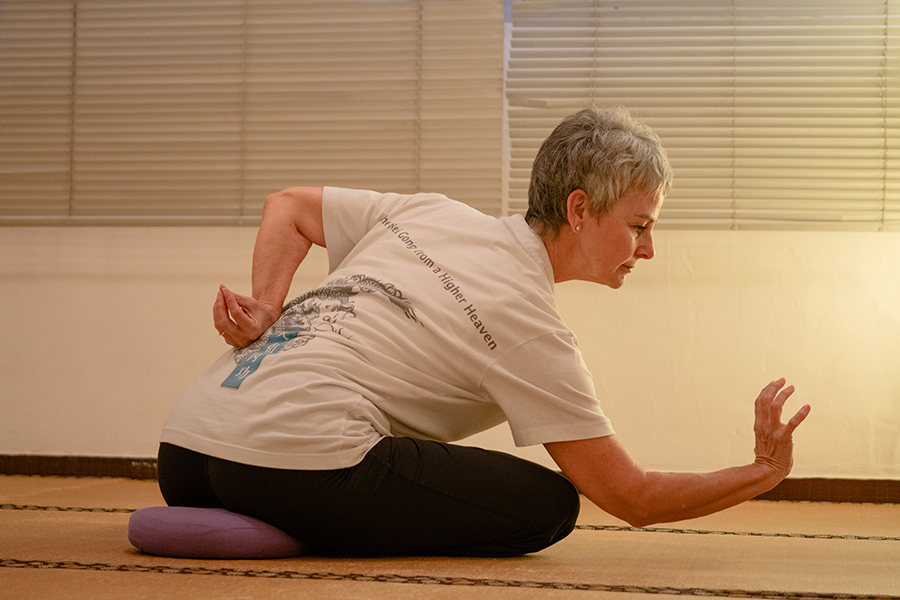
You've probably heard of Tai Chi and Qi Gong, but are you familiar with the ancient practice of Nei Gong? We headed to the Nei Gong Centre to learn more
As the world becomes more connected, you may find yourself actually getting disconnected from something really important – yourself. That’s why it’s important to schedule regular me-time activities, where you invest in you and learn something new along the way. Perhaps you’ve already tried classes at these yoga studios or meditation centres, but have you ever heard of Nei Gong? We went along to the Nei Gong Centre to find out more about the practice from the owner and senior teacher Doris Baer, and to try some classes for ourselves.
What is Nei Gong?
Nei Gong sits at the origin of all Taoist energy work, the parent practice to the more widely known Qi Gong and Tai Chi. Practiced for over 10,000 years, the literal translation of Nei Gong is ‘internal work’, and at its very essence, its purpose is to help improve both body, mind and spirit. Rooted in the Taoist Water Tradition, which emphasises nurturing and healing, this blend of physical wellness with self-development makes it a wonderful practice for people of all ages and abilities.
The Nei Gong Centre
I first saw the Nei Gong Centre on ClassPass and was curious to find out more, so I contacted the senior teacher at the studio, Doris Baer to see if we could chat more about the practice and if I could join some classes.
Doris started practicing Nei Gong in 1998, as a result of tennis elbow and frustrating back pain that had stopped her from being as physically active as she’d like to be. “Once I started regularly practicing Nei Gong, I felt my back regaining strength quite quickly. The tennis elbow gradually went away too, and I was able to go back to playing tennis and standing for long periods with no trouble.”

The Nei Gong Centre practices Tian Yan Nei Gong, a branch of the practice that was developed in Taiwan, and Doris studied intensively with a Master for two years before becoming qualified as a teacher in 2006. When asked to explain the practice, she says: “Tian Yan Nei Gong is very dynamic, and full of continuous movements. You move like a snake or a dragon. We have ‘jing gongs’, which are holding exercises to build up physical strength and flexibility, help to slow down the breathing and, most importantly, collect the qi in the Lower Dan Tien (main energy centre of the human body below the navel), then we do ‘dong gongs’ which are movements in repetition, coming from the pelvis and the spine. These exercises circulate the qi you collected earlier through the meridians and energy channels of the body and also give you an internal organ massage.”
So what’s a class like at the Nei Gong Centre?
I grew up dancing, practicing yoga regularly (from high school onwards) and playing loads of different sports, so I thought I’d experimented with pretty every which way my body could move. But I was wrong.
During the three classes I joined at the Nei Gong Centre, my body was asked to move in ways it had never done before, and I found this fascinating. Where as in dance, we’re often taught to over-extend, and to exacerbate the movement, here it was quite the opposite. In fact, there’s a 70 per cent rule in Nei Gong that blows the “no pain/no gain” slogan right out of the water.

Often, I’d find myself concentrating on a very small part of my body that I’d never really think about too much, and the way we were asked to move that part of the body was quite foreign, even though when Doris showed the movement, it looked very simple.
The classes work on different poses in four-month blocks, and while I was visiting, the final exercise was The Rokh Spreading its Wings. We were shown how to walk like a graceful yet proud bird, with flowing movements that were quite mesmerising and strangely therapeutic.
I really love a meditation class where I get to lie down and tune out with a sound bath, but the classes at the Nei Gong Centre are perfect for someone like me who likes to relax actively. It is a meditation in movement.
The Nei Gong Centre, 3/F Friendship Mansion, 345 Hennessy Road, Hong Kong

